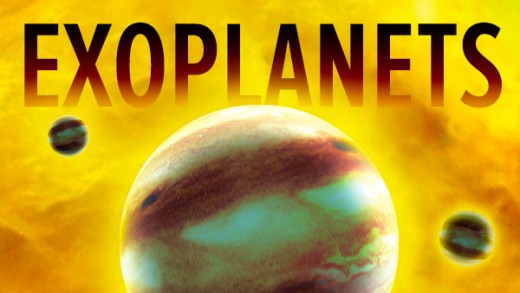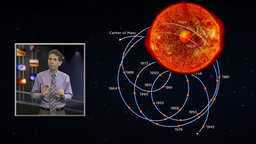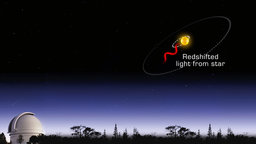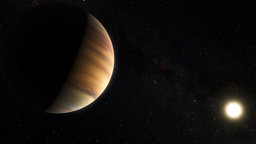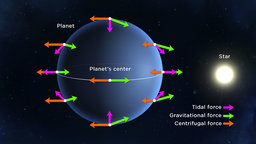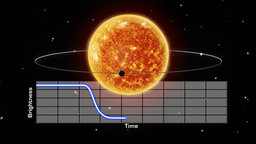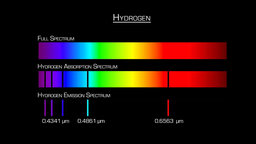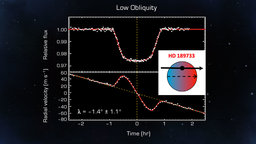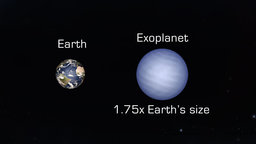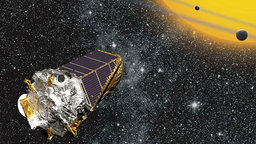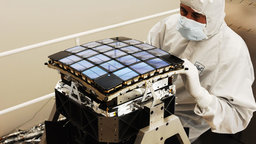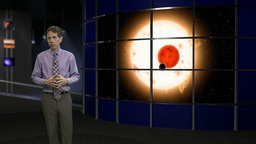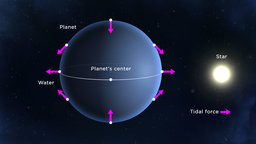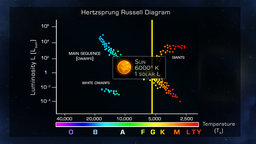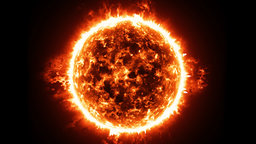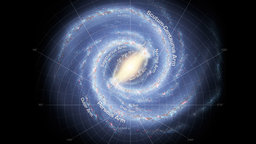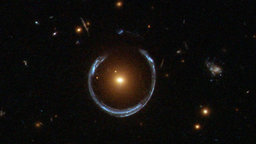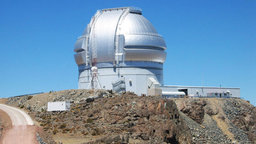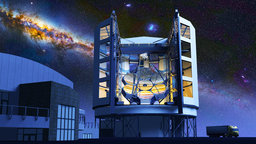Search for Exoplanets: Difference between revisions
| Line 44: | Line 44: | ||
</br> | </br> | ||
== Episode 7 | == Episode 7 The Transits of Exoplanets == | ||
[[Image:exo_E7.jpg|left]] I really liked Episode 1 as it starts to describe Stonehenge and importance of tracking the motions of the sun to its northern and southern extremes at the solstices for tracking the seasons, and thus why building alignments to determine this were important.</br> | [[Image:exo_E7.jpg|left]] I really liked Episode 1 as it starts to describe Stonehenge and importance of tracking the motions of the sun to its northern and southern extremes at the solstices for tracking the seasons, and thus why building alignments to determine this were important.</br> | ||
<blockquote>'' | <blockquote>''A tiny percentage of exoplanets can be detected transiting--or passing in front of--their host stars. Combined with Doppler shifts, transits provide information about a planet's size, mass, density, and likely…''</blockquote> | ||
</br> | </br> | ||
Revision as of 13:49, 20 March 2019
As I mentioned on the main The Great Courses page, I haven't watched this show yet, but look forward to it. For now, here is the episode guide
The Search for Exoplanets: What Astronomers Know
This is the general description of the course/series.
Half a century ago, television viewers thrilled to the exploits of the original Star Trek series with its mission “to explore strange new worlds.” Today, astronomers are doing exactly that, analyzing the data from advanced telescopes and discovering strange worlds orbiting other stars in our galaxy.
Episode 1 Why Study Exoplanets?
I really liked Episode 1 as it starts to describe Stonehenge and importance of tracking the motions of the sun to its northern and southern extremes at the solstices for tracking the seasons, and thus why building alignments to determine this were important.
Learn about the exciting mission of exoplanetary science--the study of planets orbiting stars beyond the Sun. Review the eight planets in our solar system, which provide a baseline for understanding…
Episode 2 How to Find an Exoplanet
I really liked Episode 1 as it starts to describe Stonehenge and importance of tracking the motions of the sun to its northern and southern extremes at the solstices for tracking the seasons, and thus why building alignments to determine this were important.
Given the extreme faintness of a planet relative to the star it orbits, how can astronomers possibly find it? Learn about direct and indirect methods of detection. As an example…
Episode 3 Doppler and Transit Planet-Finding Methods
I really liked Episode 1 as it starts to describe Stonehenge and importance of tracking the motions of the sun to its northern and southern extremes at the solstices for tracking the seasons, and thus why building alignments to determine this were important.
Explore two other indirect approaches for finding exoplanets: first, by measuring the Doppler shift in the color of a star due to the pull of an unseen orbiting planet; and…
Episode 4 Pioneers of Planet Searching
I really liked Episode 1 as it starts to describe Stonehenge and importance of tracking the motions of the sun to its northern and southern extremes at the solstices for tracking the seasons, and thus why building alignments to determine this were important.
Chart the history of exoplanet hunting--from a famous false signal in the 1960s, through ambiguous discoveries in the 1980s, to the big breakthrough in the 1990s, when dozens of exoplanets…
Episode 5 The Misplaced Giant Planets
I really liked Episode 1 as it starts to describe Stonehenge and importance of tracking the motions of the sun to its northern and southern extremes at the solstices for tracking the seasons, and thus why building alignments to determine this were important.
Investigate 51 Pegasi b, the first planet detected around a Sun-like star, which shocked astronomers by being roughly the size of Jupiter but in an orbit much closer to its…
Episode 6 Explaining the Misplaced Giant Planets
I really liked Episode 1 as it starts to describe Stonehenge and importance of tracking the motions of the sun to its northern and southern extremes at the solstices for tracking the seasons, and thus why building alignments to determine this were important.
The standard theory of planet formation is based on our solar system. But does this view require revision based on the existence of misplaced giant planets--hot Jupiters circling close to…
Episode 7 The Transits of Exoplanets
I really liked Episode 1 as it starts to describe Stonehenge and importance of tracking the motions of the sun to its northern and southern extremes at the solstices for tracking the seasons, and thus why building alignments to determine this were important.
A tiny percentage of exoplanets can be detected transiting--or passing in front of--their host stars. Combined with Doppler shifts, transits provide information about a planet's size, mass, density, and likely…
Episode 8 Eclipses, Comets, and Omens
I really liked Episode 1 as it starts to describe Stonehenge and importance of tracking the motions of the sun to its northern and southern extremes at the solstices for tracking the seasons, and thus why building alignments to determine this were important.
Why were the motions of the Sun, Moon, and stars so important to ancient people? Investigate key astronomical directions noticed by all cultures. Then embark on your study of Stonehenge,…
Episode 9 The Star of Bethlehem
I really liked Episode 1 as it starts to describe Stonehenge and importance of tracking the motions of the sun to its northern and southern extremes at the solstices for tracking the seasons, and thus why building alignments to determine this were important.
Why were the motions of the Sun, Moon, and stars so important to ancient people? Investigate key astronomical directions noticed by all cultures. Then embark on your study of Stonehenge,…
Episode 10 Origins of Western Constellations
I really liked Episode 1 as it starts to describe Stonehenge and importance of tracking the motions of the sun to its northern and southern extremes at the solstices for tracking the seasons, and thus why building alignments to determine this were important.
Why were the motions of the Sun, Moon, and stars so important to ancient people? Investigate key astronomical directions noticed by all cultures. Then embark on your study of Stonehenge,…
Episode 11 Chinese and Other Non-Western Constellations
I really liked Episode 1 as it starts to describe Stonehenge and importance of tracking the motions of the sun to its northern and southern extremes at the solstices for tracking the seasons, and thus why building alignments to determine this were important.
Why were the motions of the Sun, Moon, and stars so important to ancient people? Investigate key astronomical directions noticed by all cultures. Then embark on your study of Stonehenge,…
Episode 12 Origins and Influence of Astrology
I really liked Episode 1 as it starts to describe Stonehenge and importance of tracking the motions of the sun to its northern and southern extremes at the solstices for tracking the seasons, and thus why building alignments to determine this were important.
Why were the motions of the Sun, Moon, and stars so important to ancient people? Investigate key astronomical directions noticed by all cultures. Then embark on your study of Stonehenge,…
Episode 13 Tracking Planet Positions and Conjunctions
I really liked Episode 1 as it starts to describe Stonehenge and importance of tracking the motions of the sun to its northern and southern extremes at the solstices for tracking the seasons, and thus why building alignments to determine this were important.
Why were the motions of the Sun, Moon, and stars so important to ancient people? Investigate key astronomical directions noticed by all cultures. Then embark on your study of Stonehenge,…
Episode 14 Ancient Timekeeping and Calendars
I really liked Episode 1 as it starts to describe Stonehenge and importance of tracking the motions of the sun to its northern and southern extremes at the solstices for tracking the seasons, and thus why building alignments to determine this were important.
Why were the motions of the Sun, Moon, and stars so important to ancient people? Investigate key astronomical directions noticed by all cultures. Then embark on your study of Stonehenge,…
Episode 15 The Lunar Crescent and the Islamic Calendar
I really liked Episode 1 as it starts to describe Stonehenge and importance of tracking the motions of the sun to its northern and southern extremes at the solstices for tracking the seasons, and thus why building alignments to determine this were important.
Why were the motions of the Sun, Moon, and stars so important to ancient people? Investigate key astronomical directions noticed by all cultures. Then embark on your study of Stonehenge,…
I really liked Episode 1 as it starts to describe Stonehenge and importance of tracking the motions of the sun to its northern and southern extremes at the solstices for tracking the seasons, and thus why building alignments to determine this were important.
Why were the motions of the Sun, Moon, and stars so important to ancient people? Investigate key astronomical directions noticed by all cultures. Then embark on your study of Stonehenge,…
Episode 17 Breakthroughs of Early Greek Astronomy
I really liked Episode 1 as it starts to describe Stonehenge and importance of tracking the motions of the sun to its northern and southern extremes at the solstices for tracking the seasons, and thus why building alignments to determine this were important.
Why were the motions of the Sun, Moon, and stars so important to ancient people? Investigate key astronomical directions noticed by all cultures. Then embark on your study of Stonehenge,…
Episode 18 The Genius of Hipparchus
I really liked Episode 1 as it starts to describe Stonehenge and importance of tracking the motions of the sun to its northern and southern extremes at the solstices for tracking the seasons, and thus why building alignments to determine this were important.
Why were the motions of the Sun, Moon, and stars so important to ancient people? Investigate key astronomical directions noticed by all cultures. Then embark on your study of Stonehenge,…
Episode 19 Revealing the Antikythera Mechanism
I really liked Episode 1 as it starts to describe Stonehenge and importance of tracking the motions of the sun to its northern and southern extremes at the solstices for tracking the seasons, and thus why building alignments to determine this were important.
Why were the motions of the Sun, Moon, and stars so important to ancient people? Investigate key astronomical directions noticed by all cultures. Then embark on your study of Stonehenge,…
Episode 20 How the Antikythera Mechanism Worked
I really liked Episode 1 as it starts to describe Stonehenge and importance of tracking the motions of the sun to its northern and southern extremes at the solstices for tracking the seasons, and thus why building alignments to determine this were important.
Why were the motions of the Sun, Moon, and stars so important to ancient people? Investigate key astronomical directions noticed by all cultures. Then embark on your study of Stonehenge,…
Episode 21 Achievements and Legacy of Ptolemy
I really liked Episode 1 as it starts to describe Stonehenge and importance of tracking the motions of the sun to its northern and southern extremes at the solstices for tracking the seasons, and thus why building alignments to determine this were important.
Why were the motions of the Sun, Moon, and stars so important to ancient people? Investigate key astronomical directions noticed by all cultures. Then embark on your study of Stonehenge,…
Episode 22 Star Catalogs from around the World
I really liked Episode 1 as it starts to describe Stonehenge and importance of tracking the motions of the sun to its northern and southern extremes at the solstices for tracking the seasons, and thus why building alignments to determine this were important.
Why were the motions of the Sun, Moon, and stars so important to ancient people? Investigate key astronomical directions noticed by all cultures. Then embark on your study of Stonehenge,…
Episode 23 How Ancient Astronomy Ended
I really liked Episode 1 as it starts to describe Stonehenge and importance of tracking the motions of the sun to its northern and southern extremes at the solstices for tracking the seasons, and thus why building alignments to determine this were important.
Why were the motions of the Sun, Moon, and stars so important to ancient people? Investigate key astronomical directions noticed by all cultures. Then embark on your study of Stonehenge,…
Episode 24 Ancient Astronomy and Modern Astrophysics
I really liked Episode 1 as it starts to describe Stonehenge and importance of tracking the motions of the sun to its northern and southern extremes at the solstices for tracking the seasons, and thus why building alignments to determine this were important.
Why were the motions of the Sun, Moon, and stars so important to ancient people? Investigate key astronomical directions noticed by all cultures. Then embark on your study of Stonehenge,…
